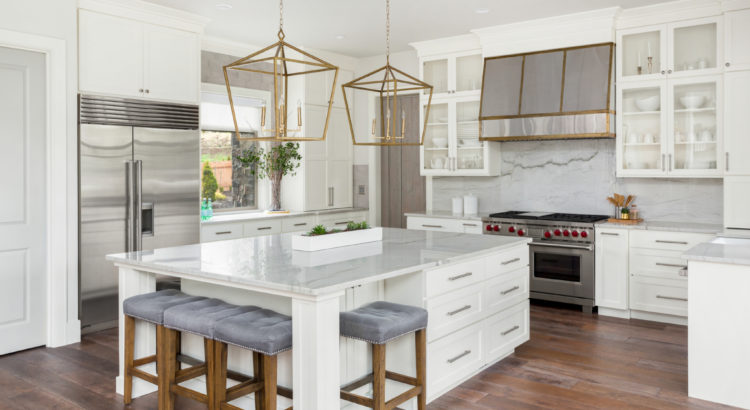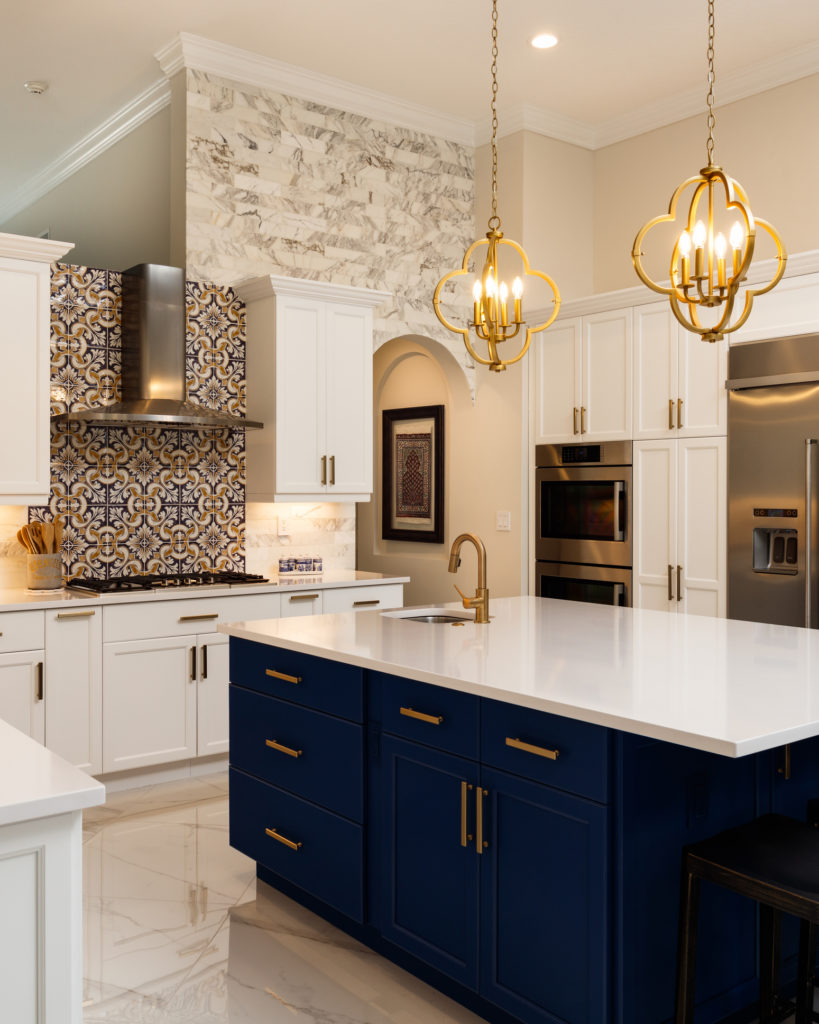Agents helping clients get their homes ready to sell, focus on several key areas to help them get the most out of the home selling process. From paint colors to flooring and everything in between, we spoke with some agents to find out what they tell clients when getting their homes ready to market.
Paint Color
Paint color is important because dark colors can make a home feel smaller and it’s too personal, according to Mona DeRosby real estate broker at LAER Realty Partners. DeRosby, who also has a bachelor’s degree in fine arts, says she tries to have her clients use neutral grey beiges from Pale Oak by Benjamin Moore to Edgecomb Grey and Light Pewter — she says these are her go-to colors for light grey beiges.
“Paint and floors in general change an entire house when deciding whether to update or not to update because it gives you a sense the house is clean and you can move right into it,” she says.
DeRosby says new paint and flooring are inexpensive ways to transform an entire house.
“Most people looking at single-family homes are families and they don’t want to move into their house and paint the walls, plus they’re usually moving from another house and need to move right in,” she said. “Doing floors and walls are the two biggest things you must do before you sell. With neutral colors, they can later paint the bedrooms the color they want. At least for now it looks good.”
Dark wood is also not in unless it’s an antique home, she says. “Painting everything white for trim is the way to go,” she says.
DeRosby says wallpaper is also making a comeback, but only as an accent wall in a bedroom behind a headboard or in a bathroom on the sink wall. People are also using paintable wallpaper to add texture.
Tracy Spaniol, Realtor with RE/MAX Encore also believes neutral colors are best and that a fresh coat of paint is important for getting your client’s home ready to market.
“Bright or specific colors can be very off-putting to a potential buyer because it immediately makes them feel that they have to move in and do work,” she says. “Bold colors may look nice in the seller’s eyes but be hated by potential buyers. A seller’s best option is to stick with a basic tone, we are seeing lots of light gray tones right now. Keeping it light and neutral gives the buyers the ability to picture the home as a blank canvas. A fresh coat of paint goes a long way in making a home feel fresh and clean.”
Declutter and Depersonalize
If a client does nothing else, they need to declutter to enable potential buyers to envision themselves in the home rather than envisioning the sellers living there, Spaniol says.
“I always tell sellers that they need to make their home look and feel like no one lives there,” Spaniol says. “This is not an easy task but I always recommend that they start to pack up and either put their things in storage or find a spot in the basement or attic where they can keep it.”
Spaniol also suggests her clients take all personal pictures and belongings off the walls and furniture.
“Less is more, again giving buyers a blank canvas to work with,” she says. “If a buyer is walking through a house loaded with furniture and tripping over things they are going to feel like the home has less space than it actually does.”
Curb Appeal
It’s not just the inside of the house that agents recommend cleaning up before putting a home on the market. The outside of a home is its first impression to a potential buyer. DeRosby recommends mowing the lawn, trimming the bushes and mulching because it can go a long way.
“When you have a yard that‘s not well kept, it stresses people out,” DeRosby says. “They haven’t made it to the house and are already thinking about how they’re going to clean up this yard.”
Minor Repairs and Fixes
Both DeRosby and Spaniol say making sure all the little things are handled is also important. Both say walking through the entire property with their client is key to finding anything that needs to be fixed before putting it on the market.
“I typically go through the entire property with people to see if anything stands out, things like deferred maintenance, if there’s a leak, if there’s rotted wood,” DeRosby says. “These are cheap fixes for people. People who live in their homes don’t realize the things that stick out, like outlet covers, light bulbs, etc.”
Spaniol has the same philosophy that sellers should make minor repairs and fixes. “For example, I think there is nothing worse than when I walk through a home with buyers and there are missing electrical outlet covers or light switch covers. That shows me that a seller does not take pride in their home,” she says. “If a seller wants top dollar for their home, they need to make buyers feel like it is worth it. If they can’t put out a few dollars for an obvious inexpensive repair, what other big repairs did they not do?”
Spaniol says sellers should also be careful not to spend too much money on big-ticket items right before listing their homes.
“In most cases, they will not get back dollar for dollar,” she says. “I like to walk through a potential seller’s home with them and make suggestions on a case-by-case or item-by-item basis, discussing the pros and cons of any work they are considering doing to get their home ready to list. For example, if a roof is on the older side but still has some life left in it, that would be a different conversation than a roof that has an active water leak in it.”
Pet Areas
For her clients with pets, Spaniol suggests keeping litter boxes, dog beds and animal cages in an area where they are not going to be smelled. “Pet smells can be an immediate turn-off to buyers walking through a home,” she says.
Further Reading
For more on preparing a home to perfection, AgentEDU has a two-part course on preparing a listing for the market. Get this and all of our 70+ video training courses for just $19.99/month!




